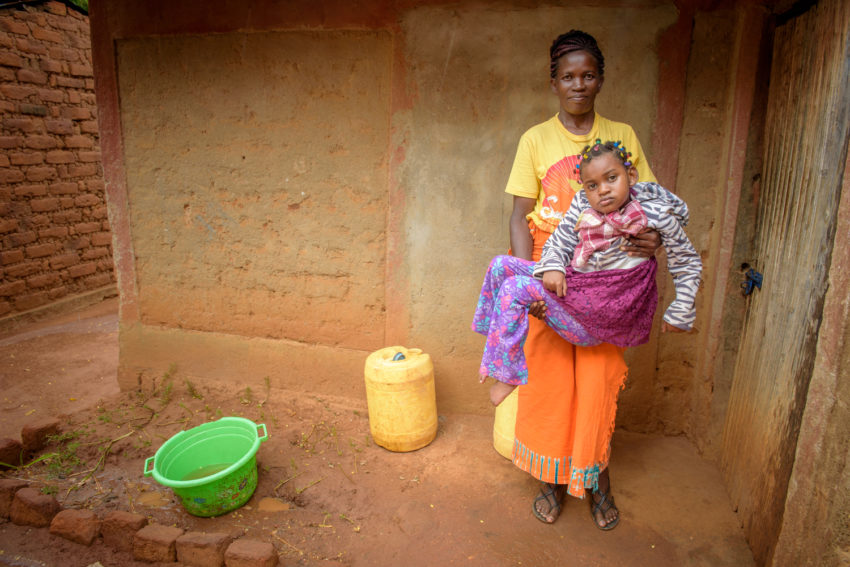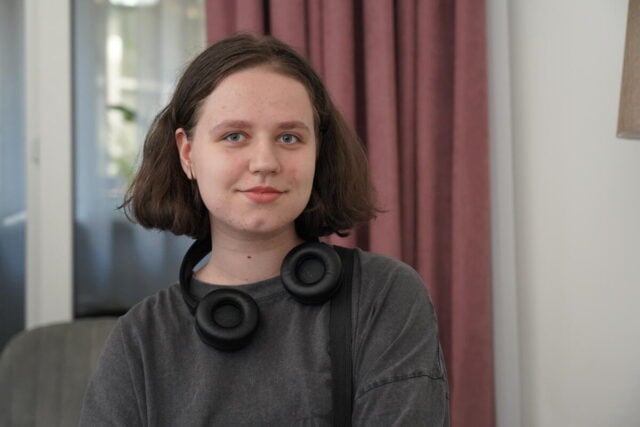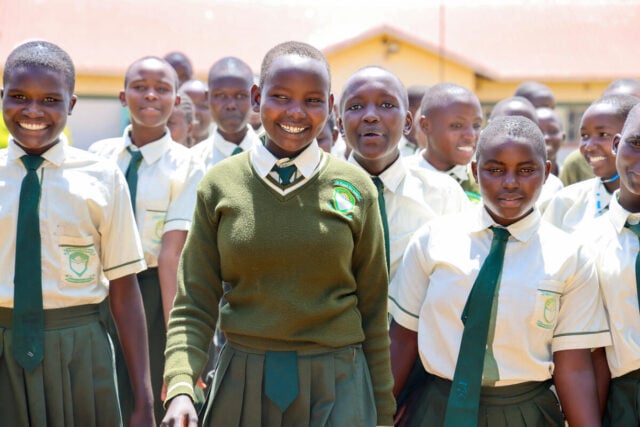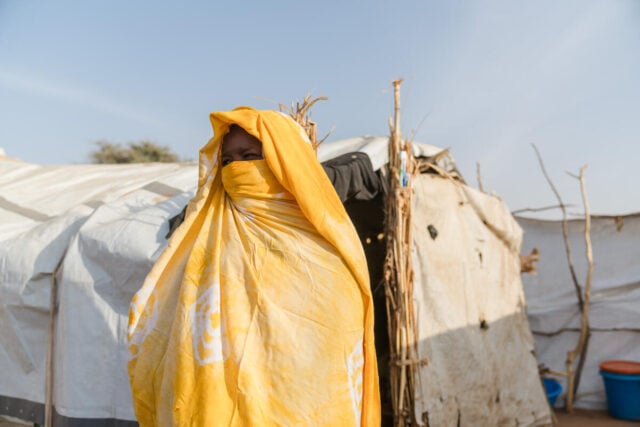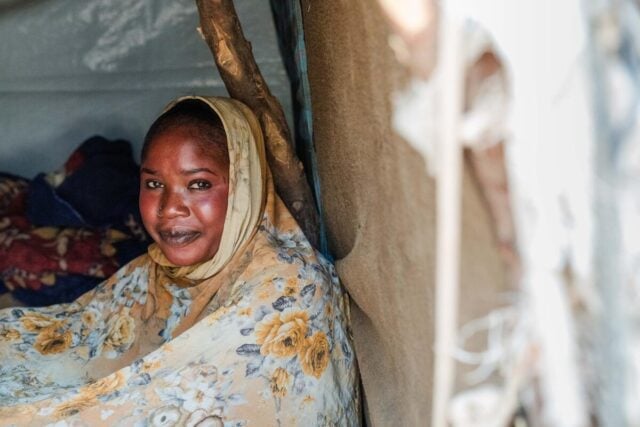Cynthia’s mother, Janet Ndinda, says that as an infant in 2011, Cynthia was progressing well. At 6 months, she was starting to crawl and was learning to sit up, but then she started having epileptic seizures.
Janet began to have to carry Cynthia everywhere because the girl could no longer move. As Cynthia grew, Janet began to experience body pains from carrying Cynthia.
Also in 2011, World Vision started working in Mwala, Kenya. World Vision partnered with USAID on the Accelerating Core Competencies for Effective Wheelchair Service and Support program, also known as ACCESS. This helped provide wheelchairs to children who needed them — children like Cynthia. Janet got training on how to lubricate the wheelchair tires, how to wash and clean the wheelchair, and also how to correctly strap Cynthia, now 8 years old, into the wheelchair.
World Vision staff connected Cynthia with physical therapy the government offers. A therapist visits Cynthia four times a month and trains Janet so she can do the exercises with Cynthia every day.
Staff hope that as she progresses with therapy, she’ll be able to do some tasks on her own and enroll in school.
Advocating for family and community change
ACCESS ended in 2017, but World Vision continued its work with children with disabilities and their families in Kenya through a program developed under the ACCESS project — Scaling Up 8+. This program helped to identify children in need of wheelchairs. World Vision’s staff then referred them to a local organization, where they received an assessment followed by a diagnosis. Ultimately, they received a fitting for a wheelchair.
World Vision ACCESS Program Manager James Keitany said that World Vision trained more than 170 people in how to do a proper wheelchair fitting through this program.
Ill-fitting wheelchairs can result in pressure sores. Varied disabilities mean the need for different types of posture support to prevent sores and additional spinal deformity. So knowing how to fit someone for a wheelchair is vital for the future health of a child. And that’s not a one-time fitting. As the child grows, they receive further fittings to ensure that the wheelchair continues to be optimal for their needs.
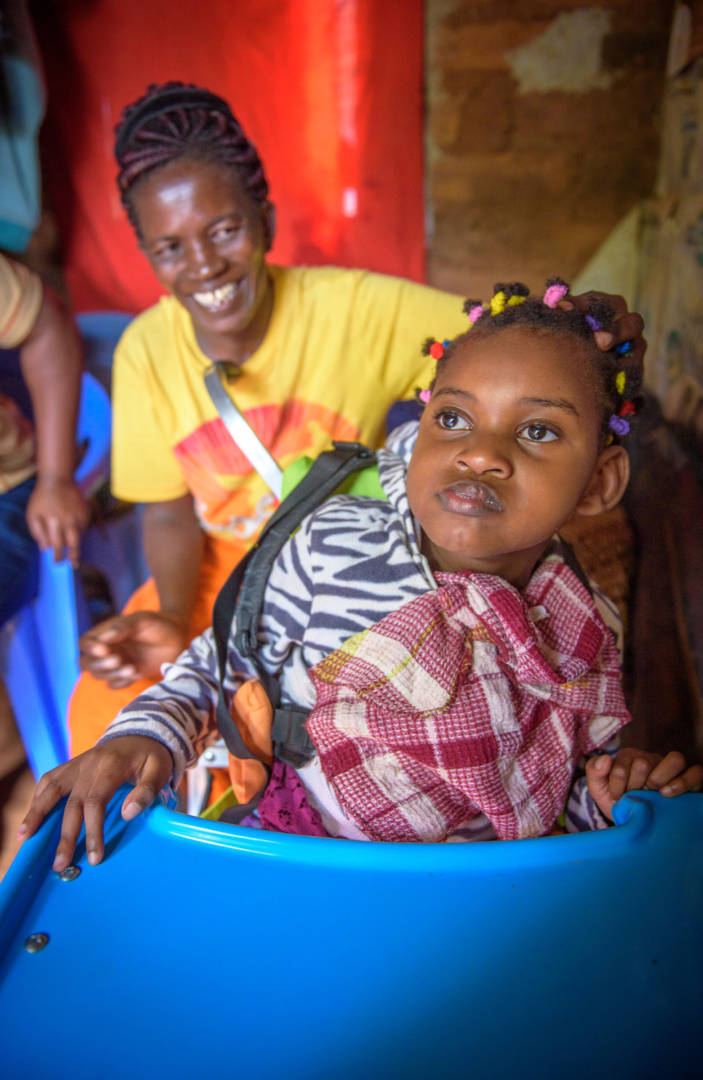
With a wheelchair, Janet feels she can envision a different future for her daughter. “Now that Cynthia has a wheelchair, I have seen that the future is bright. Now that her back is stabilizing, she’s able to sit,” says Janet. “At some point, she will be able to join school and have a bright future through education.”
The wheelchair also enables Cynthia’s inclusion in social activities. Now, Cynthia’s older sister can take her to Sunday school. Janet says, “[Cynthia] watches other children and listens to them singing. So that she feels happy. She feels included.”
Advocating for inclusion
That was another big part of the program — to ensure that people with disabilities are included and embraced in society.
“Sometimes people with disabilities are seen as a sick person, but they’re not,” says James. He says that families see education as an investment in their future, so they often won’t invest in children with disabilities. But World Vision is working to change that.
World Vision staff visited homes to make sure that children with disabilities and their families understood their rights and got access to the resources they needed. They encouraged parents to send their children to school; having a wheelchair for the child makes that a more viable option. World Vision trained teachers to positively include children with disabilities. World Vision staff linked people to government programs designed to help people with disabilities.
Citizen Voice and Action (CVA) groups lobbied hard for inclusion for all people. Through CVA, World Vision empowered people with disabilities and their families to hold local governments accountable to laws and policies that concern inclusion.
After the successful completion of the ACCESS and Scaling Up 8+ projects, wheelchair provision in Kenya is fully integrated into World Vision’s programs. Staff have been trained on how to engage with the children with disabilities and their families and to work with technical partners to provide properly fitted wheelchairs to the children.
Sponsorship benefits families of children with disabilities
Cynthia is also a World Vision sponsored child, and one of the benefits for Cynthia and her family is the livelihoods program.
World Vision staff person Margaret Matheka says that in September 2018, World Vision’s work in Mwala intentionally focused on families who had children with special needs. They worked with the families to figure out what would work best for them.
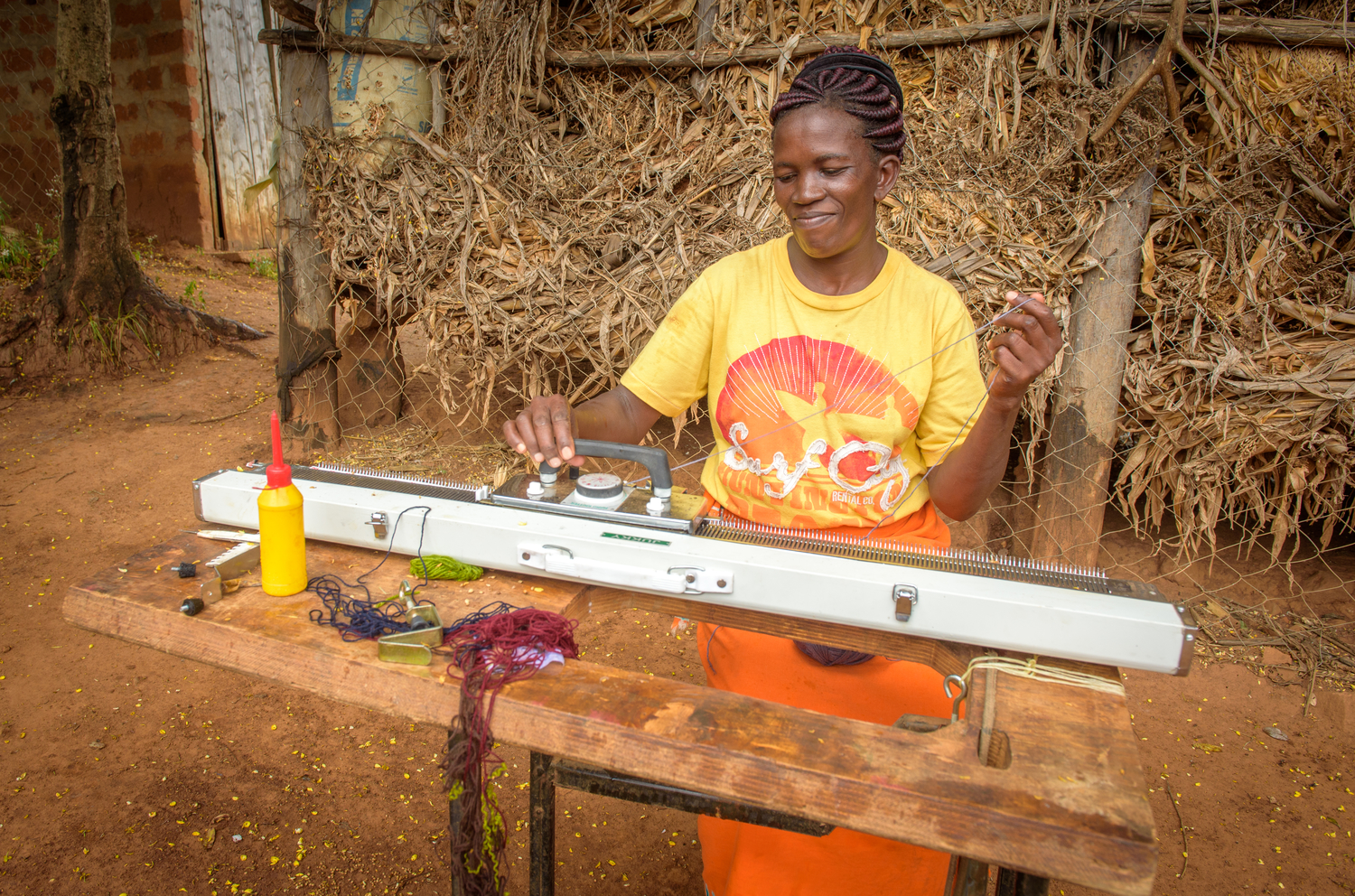
Janet needed to work from home to take care of Cynthia. She had an old, nonfunctioning knitting machine. World Vision secured a new machine for her.
She uses it to make school uniforms to sell so she can provide for Cynthia’s basic needs — clothes and food.
When Cynthia’s sponsor provided her with a special birthday gift the family chose a goat. The goat gave birth to two kids, which will further aid the family.
Janet says, “For me, since World Vision came into my life, I’ve seen a lot of transformation.”
ACCESS and Scaling Up 8+ were made possible by the generous support of the American people through the United States Agency for International Development (USAID). The contents of this article are the responsibility of World Vision, Inc. and do not necessarily reflect the views of USAID or the United States Government.
